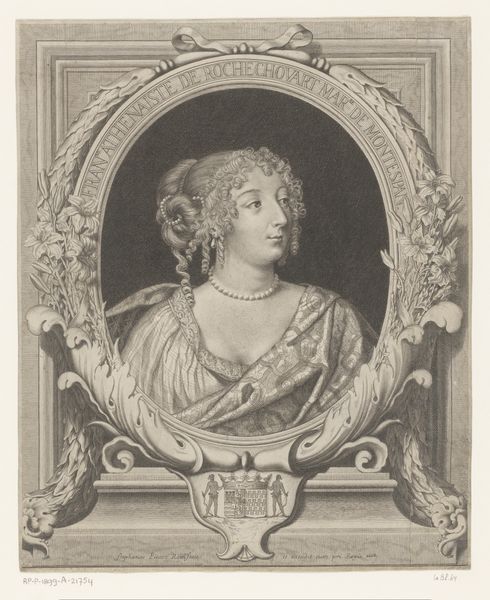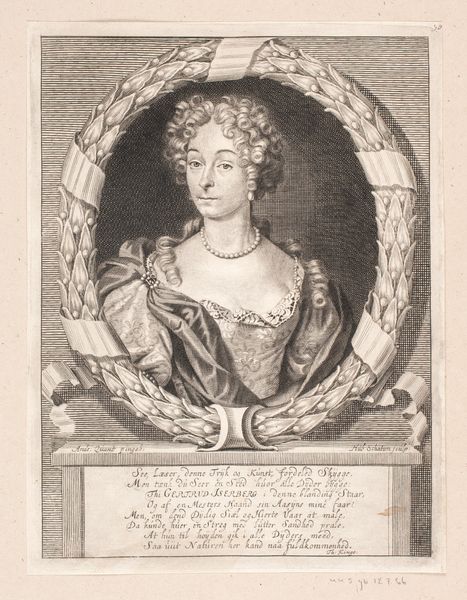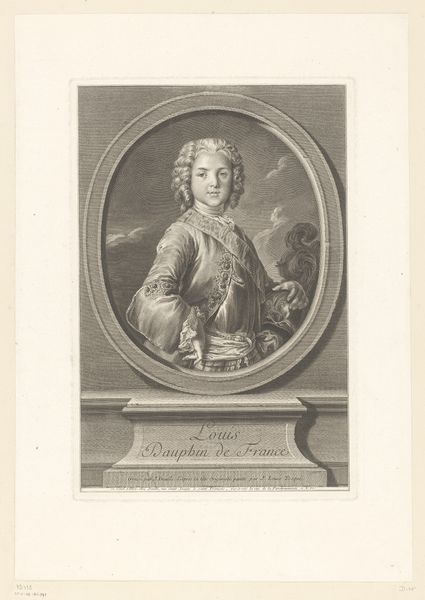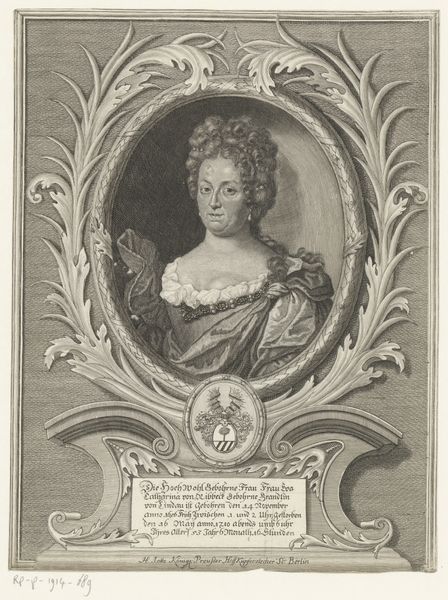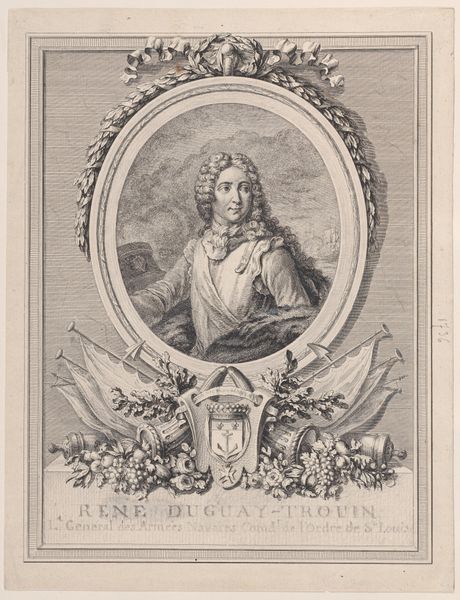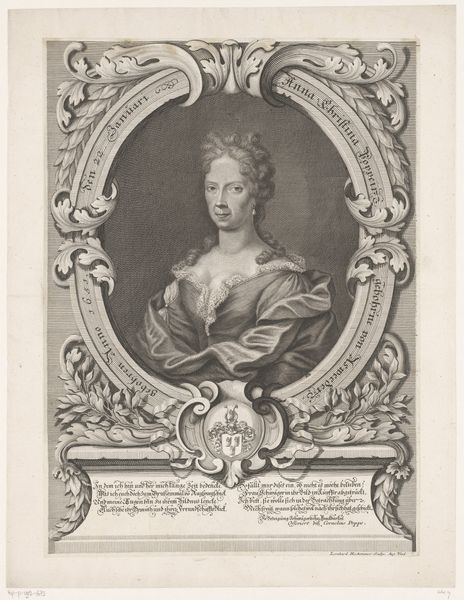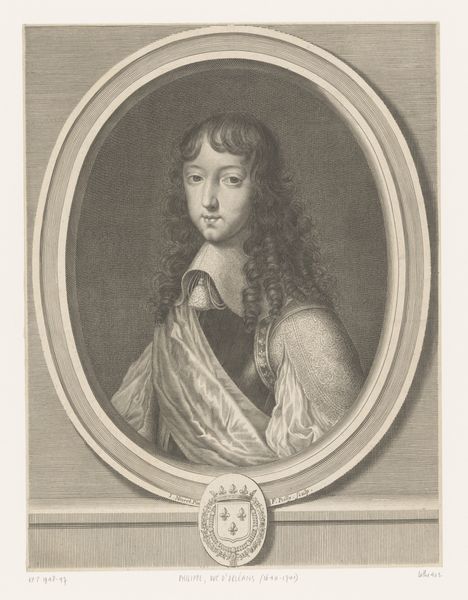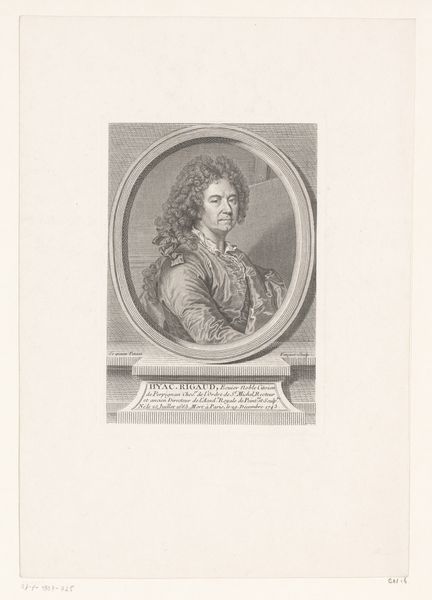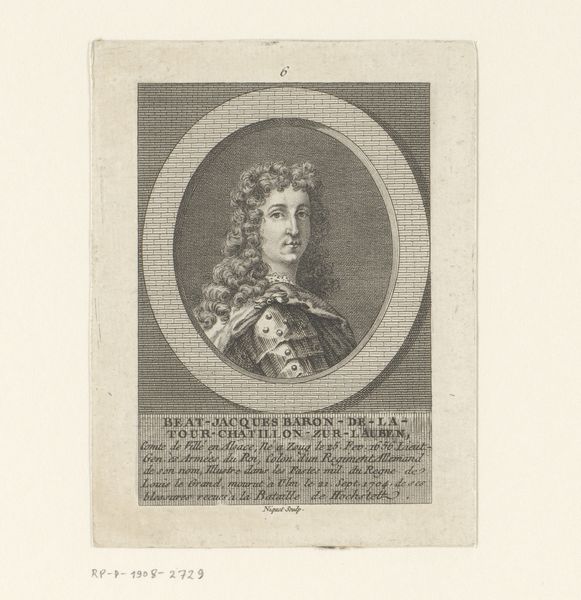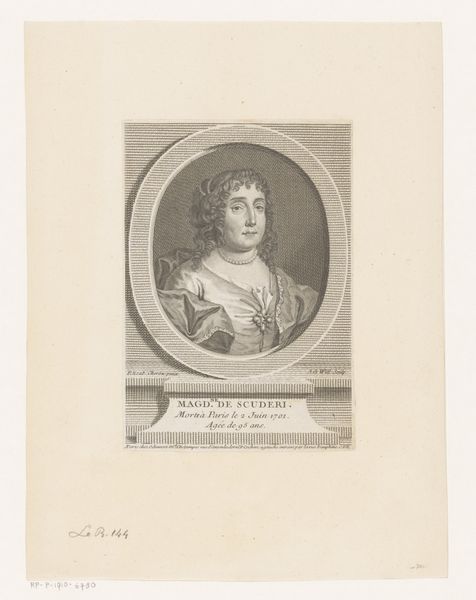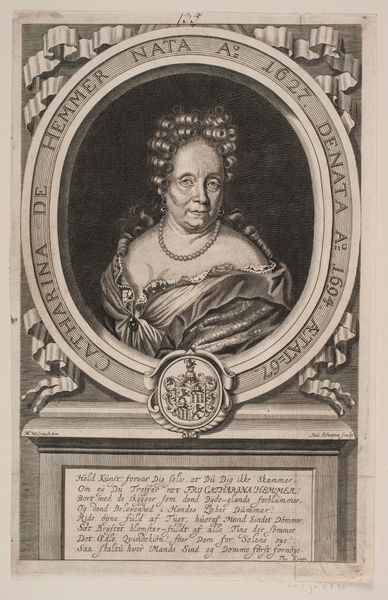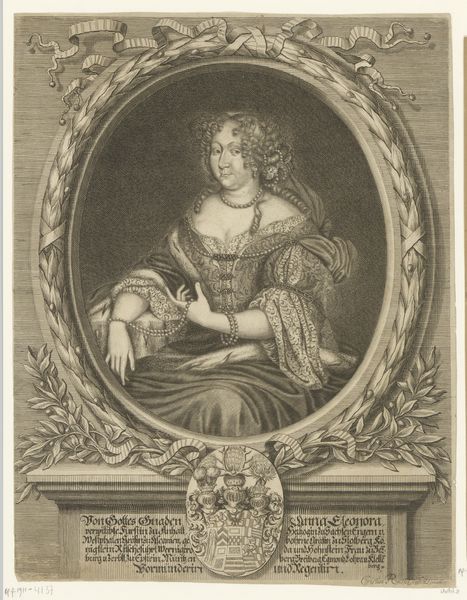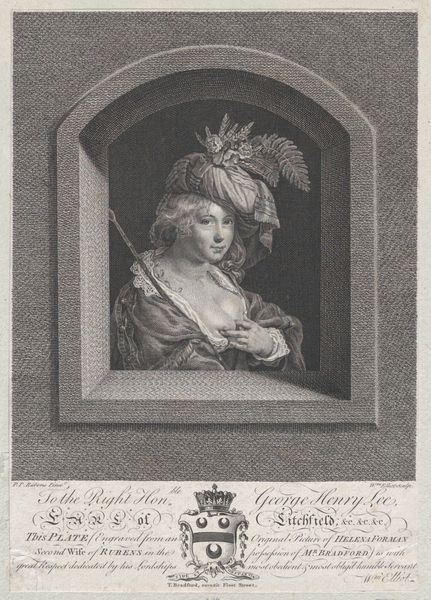
print, engraving
#
portrait
#
aged paper
#
medieval
#
baroque
# print
#
old engraving style
#
personal sketchbook
#
history-painting
#
engraving
Dimensions: 230 mm (height) x 183 mm (width) (plademaal)
Editor: This is an engraving of "Dronning Sophie Amalie" made sometime between 1742 and 1769 by Johan Samuel Lymann. It's a stately portrait. How do you interpret this work, looking at the material aspects of its creation? Curator: The first thing that grabs me is the material reality of this print. Engravings, like this, were crucial in disseminating images of power. The lines, the texture of the aged paper – these aren’t just aesthetic choices, but products of labor. The artist, Lymann, had to be skilled in manipulating metal and acid to create this matrix from which countless impressions could be made. Think of it as an early form of mass media. Editor: So, the material directly enabled the distribution of power and image? Curator: Exactly. This wasn't a unique painting accessible only to the elite. This image could be reproduced and sold, spreading the image of the Queen throughout society. Consider the social context. Who would have purchased this print? What messages were they meant to receive? It highlights the relationship between consumption, class and representation. Editor: I hadn't considered it that way. It shifts the focus from the Queen to the mechanics of how her image reached the public. So it challenges my preconceptions of "high art". Curator: Precisely. We can also examine the symbolism in the clothing. Was the fur just about keeping warm, or does the kind of material, the means of acquiring it, contribute to conveying status, power, and trade? Editor: Thinking about this piece in terms of materials, production, and distribution opens up a whole new perspective! Thanks. Curator: Indeed. It moves beyond simply admiring the Queen's image and challenges us to consider the socio-economic networks and labor that make such images possible and how that process communicates power.
Comments
No comments
Be the first to comment and join the conversation on the ultimate creative platform.
